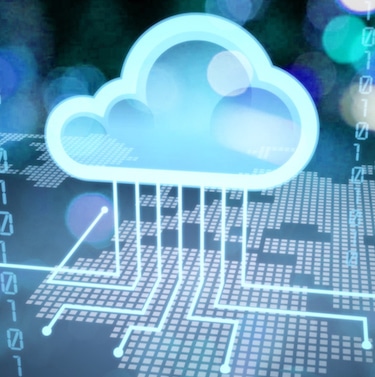Ever since digital technology appeared on the factory floor, we have seen a migration from one architectural model to another that closely follows the general-purpose computing architectures that started the digital revolution. First, there were mainframe-based systems, relatively rare but used in the largest and most demanding process applications. Next came microcomputer and microprocessor-based systems ranging from specialized systems to PLCs and DCS’s to industrialized PCs. These then took on the client-server model dominant in the ’90s and early 2000s. Today manufacturing is fully embracing Cloud in most application areas while the consumer and commercial IT market is already adopting a new architectural model. What will be the next model for Manufacturing Execution Systems (MES) architecture?
With history as our guide, it is safe to say that Manufacturing Execution Systems (MES) and other operations systems will have to adapt to a hybrid model to meet the many stakeholder requirements. In this model, much of the time-sensitive computing is done at the edge in plant floor devices while other activities take place in the Cloud. Choosing an MES that can exist at the edge, in the Cloud, and a hybrid application environment will ensure your MES investment is protected.
Industrial Computing Always Parallels but Lags General Purpose Computing
Since the beginning of the computing era more than 75 years ago starting with the ENIAC, the application of computers to industrial processes has roughly followed the evolution of general-purpose computing. While some mainframe computers were used to control shop floor operations roughly sixty years ago, it was the introduction of the affordable minicomputer, the DEC PDP-8 that brought digital computing to the plant floor.
Within three to seven years of the introduction of each new computing development, be it minicomputers, microcomputers, personal computers, or widespread local area networking, each successive architecture has become ubiquitous on the plant floor for everything from process control to data collection and supervisory capabilities. With the advent of widespread Cloud computing in the early 2010s in the commercial world, we have seen Cloud become widely accepted on the plant floor, especially for applications like MES over the last two to three years. This begs the question of what is next?
Today Cloud, IoT, “Mobile” Devices and Edge Computing Define the Everyday IT Environment

If we think about our daily lives, we all interact with a wide array of IT technologies. From our smartphones running mapping applications or rideshare apps to our cars messaging us when they need service to the voice-activated remote control of our smart televisions, the combination of Cloud, Internet of Things (IoT), handheld devices, and smart appliances and devices define our everyday existence.
Here are 5 factors to consider when choosing to implement an MES on the cloud or on premises.
Manufacturing Will Adopt the Same Distributed Computing Model
The Industrial IoT is now connecting an ever-increasing digitalized plant floor. As we all saw during 2020, staff must now access information at any time from anywhere on handheld devices. In addition to anywhere access, the advent of Augmented and Virtual Reality (AR/VR) on the shop floor and the broad acceptance of the Cloud for MES and other plant floor supervisory and support functions, such as quality and maintenance, the evidence that change is in play are obvious. Once again, this transformation parallels the general-purpose, commercial, and consumer worlds and represents the future of plant floor computing.
Making Sure Your MES Architecture is Built to Evolve
Since a Manufacturing Execution System is the platform many manufacturers use to manage their operations, it must be capable of operating in this new environment. This means your MES architecture must be Cloud capable, support devices such as AR/VR headsets, handheld displays, and be able to operate in the Cloud, on the plant floor in dedicated services, and offload some of its computational load to edge devices.
To do this the use of a microservices architecture is imperative. If choosing a new MES, make sure your supplier can accommodate all these requirements. If your current MES is not upgraded to an available microservices architecture, you should do so as soon as possible. To avoid incurring a significant technical debt the time to invest is now.





